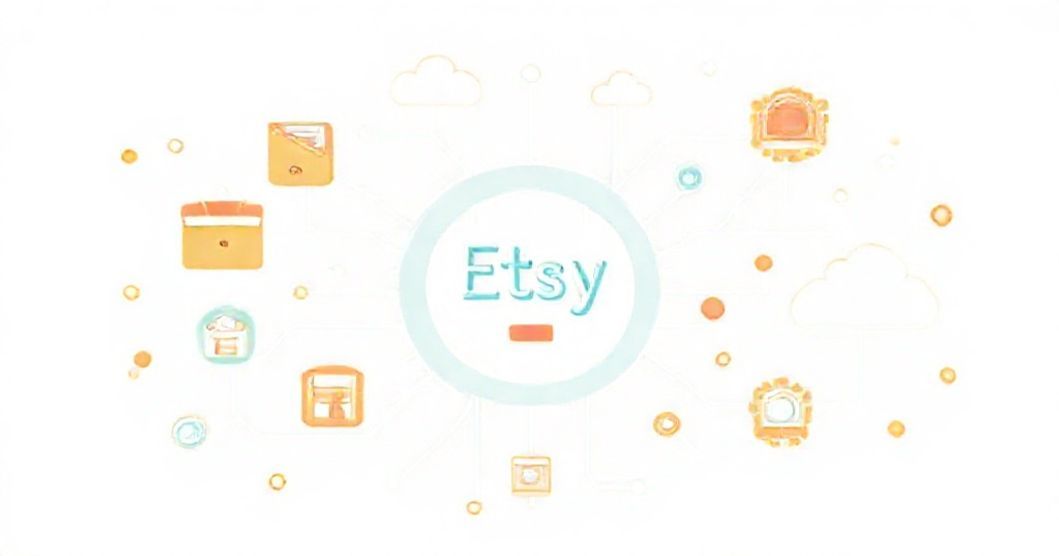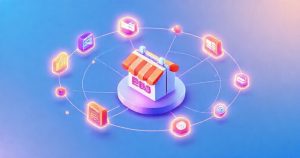In the dynamic world of online retail, managing an Etsy store efficiently requires more than just creating unique products. Strategic Etsy integrations are pivotal for sellers aiming to optimize their operations, save valuable time, and scale their businesses effectively. These powerful tools connect your Etsy shop with other essential platforms, automating various tasks from inventory management to order fulfillment and accounting. Embracing these integrations can transform your workflow, allowing you to focus on creativity and growth rather than manual administrative burdens.
Understanding Etsy Integrations for Seamless Operations
Etsy integrations refer to the process of connecting your Etsy shop to third-party applications or services. This connectivity allows data to flow seamlessly between platforms, eliminating the need for manual data entry and reducing the risk of human error. For any Etsy seller, understanding these integrations is crucial for streamlining daily tasks and maintaining a competitive edge. They are designed to enhance various aspects of your business, making it more manageable and productive.
Key Benefits of Integrating Your Etsy Store
The advantages of integrating your Etsy store are numerous, impacting almost every facet of your business operations. From improving customer satisfaction to boosting overall profitability, these benefits are essential for sustainable growth. Implementing the right integrations can significantly reduce operational friction, allowing for a smoother and more responsive business model. It’s an investment in efficiency that yields substantial returns.
Enhanced Inventory Management
One of the most significant benefits of Etsy integrations is improved inventory management. Connecting your Etsy store to an inventory management system ensures that stock levels are automatically updated across all your sales channels. This prevents overselling and helps maintain accurate product counts, a critical factor for customer satisfaction. Real-time synchronization saves hours of manual reconciliation and minimizes costly stock discrepancies.
Streamlined Order Fulfillment
Integrating your Etsy shop with order fulfillment or shipping solutions drastically simplifies the shipping process. Orders placed on Etsy can be automatically transferred to your chosen shipping platform, generating labels, tracking numbers, and even sending automated updates to customers. This level of automation accelerates dispatch times, reduces manual errors, and provides a professional, consistent customer experience. Efficient fulfillment is a cornerstone of positive seller reviews.
Centralized Financial Tracking
Managing finances can be complex, but Etsy accounting integrations simplify it considerably. By linking your Etsy store to accounting software, all sales, expenses, and fees are automatically recorded. This provides a clear, real-time overview of your financial health, making tax preparation and budgeting much easier. Such integrations eliminate manual data entry, ensuring accuracy and saving significant time during financial reporting periods.
Expanded Sales Channels
For sellers looking to grow beyond Etsy, integrating with other e-commerce platforms like Shopify or WooCommerce is invaluable. This allows you to manage products, inventory, and orders from multiple sales channels within a single dashboard. Expanding your reach to a broader audience without multiplying your workload is a powerful growth strategy. These integrations make multi-channel selling accessible and efficient for any Etsy business.
Data-Driven Decision Making
Etsy integrations can consolidate sales and operational data from various sources into a single, comprehensive report. This unified view provides deeper insights into customer behavior, product performance, and overall business trends. Armed with this information, sellers can make more informed decisions about product development, marketing strategies, and pricing. Data-driven choices lead to more effective business strategies and increased profitability.
Popular Etsy Integration Types and Their Applications
The market offers a wide array of integration types, each designed to address specific business needs for Etsy sellers. Choosing the right combination depends on your unique operational requirements and growth objectives. Exploring these options reveals how various tools can connect to enhance different aspects of your online store. Understanding their applications is key to building a robust and efficient e-commerce ecosystem.
E-commerce Platform Integrations
Integrating Etsy with platforms like Shopify or WooCommerce allows sellers to synchronize product listings, inventory, and orders across multiple storefronts. For instance, a small business selling handmade jewelry might use Shopify for their primary website and Etsy for marketplace exposure. An integration ensures that when an item sells on one platform, its stock level is immediately updated on the other, preventing overselling and maintaining consistency across all channels.
Inventory and Order Management Systems (OMS)
Dedicated OMS tools like Sellbrite or Brightpearl are crucial for multi-channel sellers. These systems pull orders from Etsy and other marketplaces into a single interface, centralizing order processing and inventory updates. An Etsy seller managing a high volume of diverse products can use an OMS to track every item’s journey from listing to delivery. This provides unparalleled control over stock levels and order fulfillment, minimizing errors and maximizing efficiency.
Shipping and Fulfillment Solutions
Integrating with shipping platforms such as ShipStation or Pirate Ship automates label creation, rate comparison, and tracking updates. These services often offer discounted shipping rates compared to direct carrier prices, directly impacting profitability. For example, a ceramic artist on Etsy can save significantly on shipping costs for bulky items by leveraging discounted rates and automating label generation, streamlining their entire fulfillment process and enhancing their profit margins.
Accounting Software Integrations
Tools like QuickBooks Online or Xero integrate directly with Etsy to automatically import sales data, transaction fees, and other financial details. This eliminates manual data entry, reducing the chance of errors and simplifying tax preparation. A seller specializing in custom artwork can easily categorize income and expenses, preparing accurate financial reports without the tedious process of manual reconciliation, saving valuable time and reducing stress.
Print-on-Demand (POD) and Dropshipping Integrations
For sellers offering custom designs, POD services like Printful or Printify integrate seamlessly with Etsy. When an order for a custom t-shirt or mug is placed, the integration automatically sends the design and order details to the POD provider for production and shipping. Similarly, dropshipping integrations with platforms like Spocket allow sellers to offer a wider range of products without managing inventory. These integrations automate the fulfillment process entirely, allowing sellers to focus on design and marketing, expanding their product offerings with minimal upfront investment.
Choosing the Right Integration Solutions for Your Etsy Business
Selecting the appropriate Etsy integrations is a strategic decision that can significantly impact your business’s trajectory. It involves careful consideration of your current operational needs, future growth plans, and budget. The right choices empower your business, while ill-suited integrations can lead to inefficiencies. A thorough evaluation process ensures that every tool you implement genuinely adds value to your Etsy store.
Assess Your Business Needs
Before adopting any integration, clearly identify the specific challenges you face in your Etsy business. Are you struggling with inventory accuracy, slow order processing, or time-consuming bookkeeping? Pinpointing your pain points will guide you toward solutions that directly address those issues. Understanding your unique operational requirements is the first step toward effective integration. This foundational assessment ensures targeted and impactful improvements.
Consider Scalability and Features
Look for integration solutions that can grow with your business. A tool that works for a small volume of sales might not be adequate as your Etsy store expands. Evaluate the features offered by each integration, ensuring they align with both your current and anticipated future needs. Investing in scalable solutions prevents the need for costly and disruptive transitions later on. Prioritizing long-term utility is a smart business move.
Evaluate Cost vs. Benefit
Integrations come with varying price tags, from free basic versions to premium subscriptions that can range from $10 to $100+ per month, depending on features and usage. Carefully weigh the cost of an integration against the time and resources it will save, as well as the potential increase in efficiency and profitability. A slightly higher investment in a robust solution often yields a greater return on investment through increased automation and fewer errors.
Prioritize Ease of Use and Support
The most powerful integration is only effective if it’s user-friendly and supported by reliable customer service. Opt for tools with intuitive interfaces that your team can easily learn and operate. Furthermore, investigate the quality of customer support offered. Prompt and helpful assistance can be invaluable when troubleshooting issues or learning new functionalities. A smooth user experience minimizes disruption and maximizes productivity.
Conclusion: Maximizing Your Etsy Potential with Strategic Integrations
Etsy integrations are not merely add-ons; they are essential strategic tools that empower sellers to optimize every facet of their online business. By automating repetitive tasks, centralizing data, and expanding sales channels, integrations free up valuable time and resources, allowing for greater focus on creativity and customer engagement. Embracing these powerful solutions can transform your Etsy store into a more efficient, scalable, and profitable enterprise, paving the way for sustained success in the competitive e-commerce landscape.






